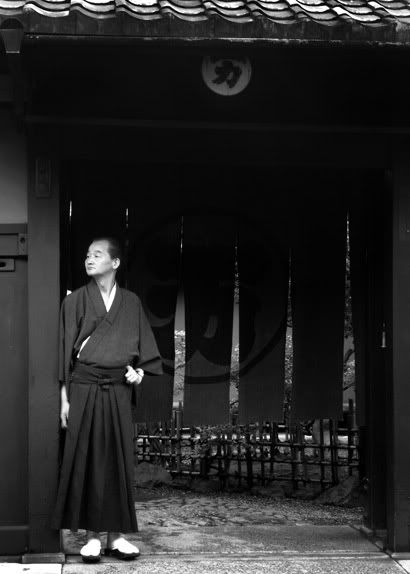
Behind the gate of the Ichirikiya, the world of old Japan lives on.
The fame of the Ichirikiya,
The story of the 47 Ronin is one of the most celebrated in the history of the samurai. This was perhaps all the more so because it occurred at a time when the samurai class was struggling to maintain a sense of it’s self - warriors with no war, a social class without a function. Over time, the story became a symbol of loyalty to one's master, and later (especially during WWII), of loyalty to the Emperor.
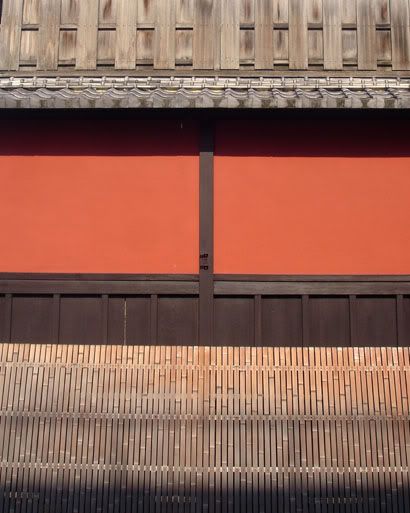
The bright red walls of the Ichirikiya, which concealed the leader of the 47 ronin.
The fateful series of events began to unfold in 1701, when the young daimyo of Ako was instructed to receive the emperor's envoys as they paid respect to the Shogunate. In order to properly perform this duty, he was placed under the tutelage of a corrupt, yet powerful, official in the hierarchy of the Tokugawa Shogunate: Kira Kouzukenosuke. Angry that Ako ha not seen fit to offer a bribe for his services, Kira verbally abused Ako, insulting and humiliating him in public while refusing to teach him proper court protocols. Finally during a meeting at
Kira's survived, but the attack on a shogun official within the
Kira, however, was no fool, and expecting retaliation from Ako's samurai, fortified his residence under heavy guard. To quell the suspicions of the Shugunate and Kira, the 47 ronin spilt up and became tradesmen, monks, and in Oishi's case (their leader), playboys. He moved to 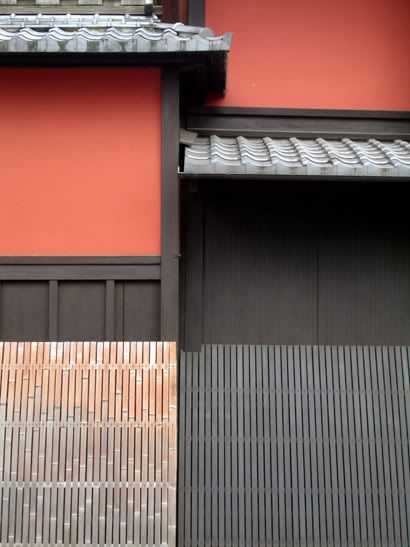
Drunk and stumbling home one night, Oishi fell down in the street and passed out. Onlookers laughed, and one Satsuma man, so infuriated by his 'conduct unbecoming of a samurai insulted him for his lack of courage in failing to avenge his master's death, kicked him in the face and spat on him (to even touch the face of a samurai was a great insult, let alone kick it). Soon after, concerned that her husband was taking the act too far, his faithful wife of 20 years questioned his behavior. He divorced her on the spot and bought a beautiful concubine to take her place
When word of this reached Kira, he became convinced that he was no longer in danger. When he began to relax his guard, the rest of the ronin gathered in
When the necessary preparations were made and Oishi was convinced that they could catch Kira off his guard, he fled 
At their last supper, the men had agreed that they would cut off Kira's head and offer it at the tomb of their master before turning themselves in to face their deaths. Oishi also asked that they take care to spare the women, children and helpless people in the attack. After breaking thru the guard at the Kira's gate, he even sent messengers to the neighboring houses, explaining that they had not come as thieves but as retainers out to revenge the death of their master, promising bring them no harm. In their hatred for Kira, the neighbors did nothing
After a fierce battle with Kira's men, Kira himself was no where to be found. Oishi checked his bed, the warmth of which promised he could not be far. In their search they discovered the entrance to a secret courtyard hid behind a large scroll. Hiding in a storage building they found a man who refused to disclose his identity. Under the light of a lantern the scar on his head from Ako's attack betrayed him, making it clear to the men that it was indeed Kira .
In a show of respect for Kira's high rank, Oishi got down on his knees and respectfully addressed him, announcing that they were retainers of Asano, come to fulfil their duty by avenge his death. Handing Kira the same dagger Ako had committed Seppuku with, he invited Kira to die as a true samurai, taking his own life. He even offered to act as a second (as portrayed in Algren's first encounter with 'The Last Samurai', when he cuts off the head of his friend after he commits seppuku), but Kira was speechless, trembling with fear. Finally Ōishi ordered the others to hold him down as he cut off his head with Ako's dagger. Extinguishing the lamps and fires in the house (lest any cause the house to catch fire, and start a general fire that would harm the neighbours), they sent out for the grave of their master, carrying Kira's bloody head, while the youngest ronin was ordered to travel to Akō and inform them that their revenge had been completed. Along the way they were praised by the common people for their courage.
At the temple, they cleaned Kira's head in a well, laying it and Ako's dagger before his tomb. After praying, they left all their money to the abbot, asking for a proper burial before turning themselves in.
Although the ronin had followed the precepts of bushido (the way of the warrior) by avenging their lord, they had also undermined the authority of the shogunate, which had forbidden their revenge. On Febuary 4, 1703, the shogunate graciously allowed the 46 men to commit Seppuku rather than be executed as criminal. A truly happy ending, by Japanese standards.
The forty-seventh ronin eventually returned from his mission, and was pardoned by the Shogun, perhaps because of his youth. He lived to be seventy-eight, and was then buried with his comrades and his lord at Sengakuji. The clothes and arms they wore are still preserved in the temple to this day, along with the drum and whistle used in the attack. (Their armor had been home in order not to arouse suspicion by buying it).
The tombs became a place of great veneration, and people flocked there to pray. One of those who came was a Satsuma man, the same one who had mocked and spat on Ōishi as he lay drunk in the street. Addressing the grave, he begged for forgiveness for his actions, and for thinking that Ōishi was not a true samurai. He then committed seppuku, and was buried next to the graves of the ronin, who many feel were the finest examples of samurai loyalty to emerge from the Edo Period.
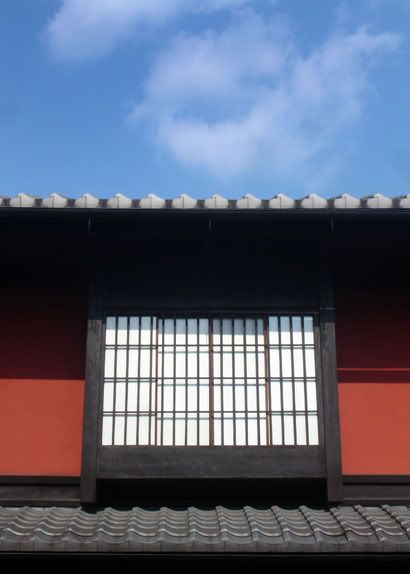


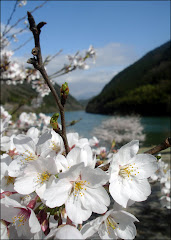

2 comments:
Your blog is fantastic, the photography is amazing.
Thanks for sharing this I lerned something new again visiting here.
As Ronin, I find your account magnificent and in the true and just spirit we must all hold on to.
Much is to be learned from the old ways, our modern times fool us into comforts to think we are mortal.
That is all.
Post a Comment